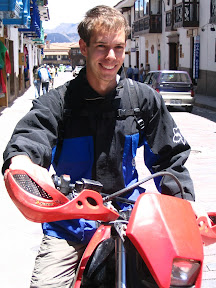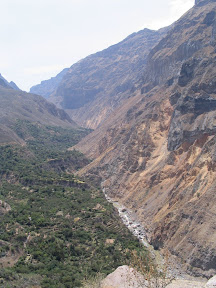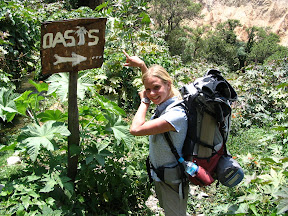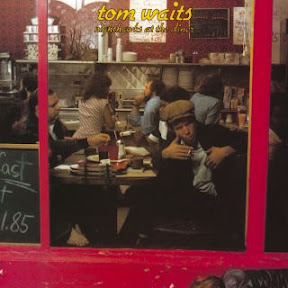Hitchhiking
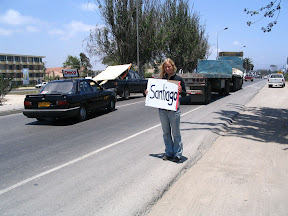 |
| From Chile |
For hitchhiking, Chile rates somewhere between New Zealand (never waited more than 5 minutes) and Australia (stood by the side of the road for an hour, got a bottle thrown at us). It took us 20 minutes before we were picked up, but when we did, we got to ride in this. Which is where I'm sitting now, with a commanding view of the road. It's a nice way to travel, if a little shaky for writing. It's just as well you're reading the transcribed version otherwise you'd have to decipher my handwriting.
After crossing the border some days back, we took a bus from Arica, a border town in the north, to La Serena, a vacation spot 6 hours north of Santiago. The good part of the trip was that, being in Chile, the roads were good and the bus was comfortable.1 The bad part was it was still 22 hours on a bus. We passed through terrain containing nothing other than rocks and sand. Fascinating to look at out of a moving bus. Less so, I would imagine, if we were to suffer a breakdown.
A lot of the world's astronomical observatories are scattered in the area around La Serena, due to its lack of rainfall and exceptionally clean and clear skies. There's also a small amateur observatory where tourists can observe the stars. We toured this on our second night there, and the sky was beautiful. If Anne's digital camera hadn't started acting up because of a CCD manufacturing defect, I would have been able to post some photos.
We went on a tour of nearby Elqui Valley the next day. On the way out of town, we pulled up at a stoplight to see two very angry looking men get out of their cars. I couldn't see any sign of a major crash, but from the looks on their faces you would think one had cheated with the other's wife. It didn't take long for a fight to break out. Not a small shoving match, but full on throwing punches. After the first hit, one guy appeared to make a dash for it, but it soon turned out he was heading for a nearby pile of rubble. He returned with a large rock in his hand and a fight-to-the-death look on his face. Then the light turned green and our front row seats were whisked away, leaving behind the sounds of a police siren and screaming women trying to break them apart.
Welcome to Chile.
I'm assuming that's the rare exception rather than then rule. Our hitchhiking driver is so nice he bought Anne and I a bag filled with manjar pastries and insisted on paying.
Our tour of the valley continued with an extended explanation of why Pisco wine is of Chilean, and not Peruvian, origin. Something a bartender in Peru had argued exactly the opposite of when we were in Cusco. Why exactly this is an issue remains a mystery to me. Apparently some people have managed to attach national pride to it, and as with most things to do with nationalism, logic has now left the party.
Our tour ended at a pretty little winery. Although Chile in general is much more expensive than other South American countries, it's hard not to be cheerful when a good bottle of wine is $5, and a very nice one is $8.
Looks like there's a couple hours left before we reach Santiago. I think I'll relax and watch the afternoon scenery roll by.
In general the country is much more developed than others in South America, and there is very little corruption. After a 17 year dictatorship, I'm curious as to how this came to be. I'm not aware of other countries progressing so well after a relatively recent political situation such as that.↩


